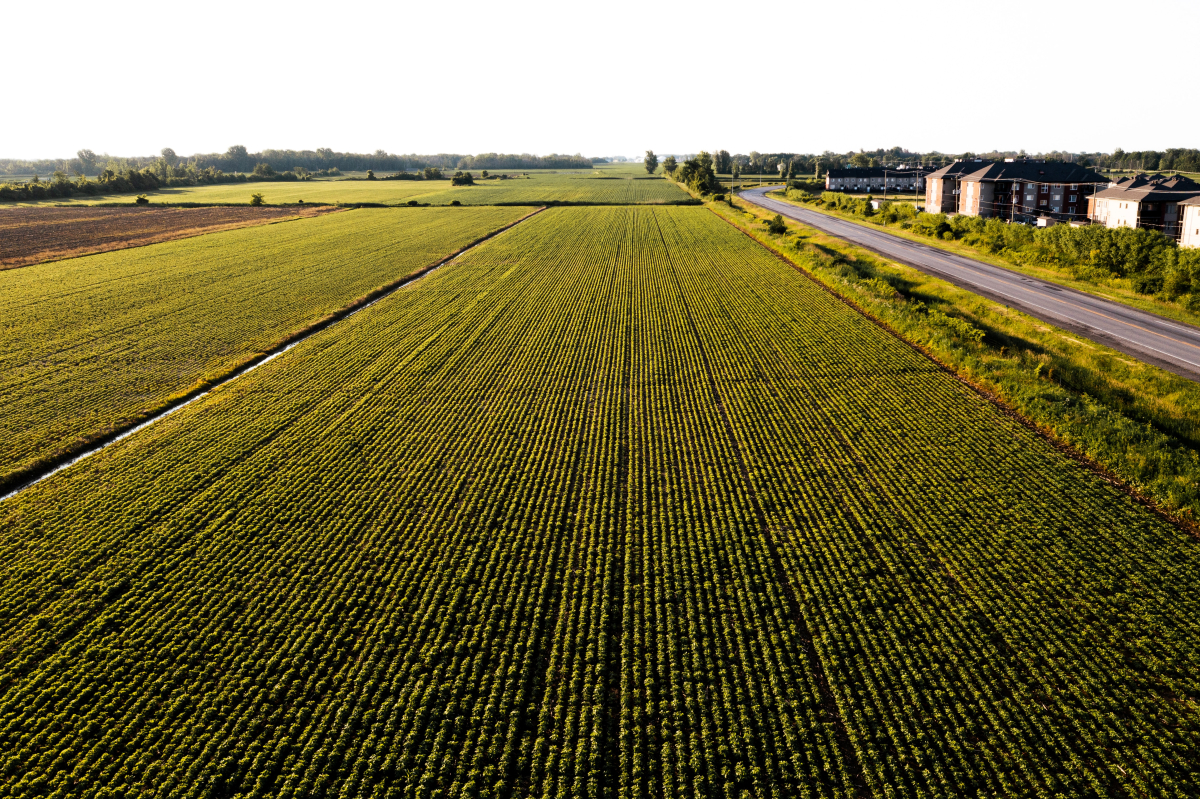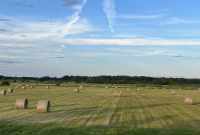Support strong Canadian climate journalism for 2025
A farmer friend challenged me about what he considered alarming statements related to climate change. He sighed and said, “A temperature bump of 1.5 C probably won’t bother me.”
There is a difference between climate and weather. For example, the climate this July was 1.5 C higher on average around the globe than pre-industrial (before 1850) average temperatures. Weather in specific locations at specific times in July was much hotter than normal in Phoenix, Ariz., while being relatively normal in Ontario, with exceptional flooding in Nova Scotia.
Wonky weather is the result of a shifting climate — i.e., increasing greenhouse gas (GHG) emissions in our global atmosphere, thus increasing average global air and ocean temperatures, with less predictability about the movement of masses of air and ocean water. People experience wonky weather in local regions with temperatures that are too low or too high or with too little or too much precipitation, possibly with excess winds and associated wildfires, at unexpected times.
Many of my farm friends in Ontario are skeptical about the actual risks of wonky weather because, so far, we have been mostly spared. However, conversations with farmers in hot and wildfire and flooded areas of B.C. or Fiona-battered, wildfire and flooded areas in Nova Scotia are sprinkled with exclamations of “So much loss!”
My contention is that even Ontario farmers should prepare for wonky weather. Mark Twain (sixth cousin of my great-great-great-grandmother and probably six times more prescient than me) warned how difficult it is to make predictions, especially about the future. Nevertheless, I assert that wonky weather will strike again and again.
It is well established that relatively high levels of soil organic matter (SOM) will mitigate crop devastation during droughts and floods. Arguably, SOM is a public good, given its long-term impact on Canadian food security. Farmers should be incentivized with government programs to maintain good SOM levels or improve fields with poor SOM levels. Measurements according to a consistent scientific protocol can verify the SOM status in every field, every five years.
Upon sale of a farm, when cash is available, it is reasonable to tax a seller according to the degree that fields have poor SOM levels. Fields with good SOM levels should not be so taxed.
With appropriate incentives, farmers will respond with integrated methods like service crops, soil amendments, reduced tillage and appropriate crop rotations based on their soil types, historical weather data and market opportunities. It is the outcome of good SOM levels that should be incentivized and not specific practices. Farmers with choice will implement practices that achieve results, while fitting their operations.
Recently, I watched closely as a farmer from Nova Scotia showed me how he intends to slow water on a sloping field when there is excess precipitation in order to store it for periods of drought. His diagram, sketched with a stick in mud as mosquitoes harassed us, indicated there would be a ditch every 100 metres curving across the slope toward a holding pond. Each ditch would also be endowed with diverse habitat for an associated farm enterprise of nut and fruit trees and pollinator habitat.
Slowing and storing water could include controlled drainage to reduce losses of water and nutrients from fields, while also improving crop yields. An additional step might be to drain to a holding pond when there is excess water in the field and then pump water back to tiles at the tops of slopes when water levels are limiting.
Strategically placed berms and grassed waterways on natural low dips in fields can also help, especially if there are wetlands to absorb excess water. Not to be overlooked are the mitigating effects of wetlands when wildfires approach.
With a strategy of maximizing yields, it seems counterproductive to use plants bred and selected to mature sooner. However, with a strategy of stabilizing yields under the increasing probability of wonky weather, it makes sense to have some crop fields that mature sooner and do not depend on an ideal season of optimum moisture and temperatures at expected times. Crops that can be harvested early, even in ideal seasons, require less drying, if at all, and allow more leeway to establish service crops effectively.
The Saskatchewan Crop Insurance Corporation “allows farmers who have had to write off crops this summer due to low yields or grasshopper damage to divert those crops to feed.” It makes sense to integrate livestock with cropping to capture nutrients from failed crops and deposit manure, while gaining more economic value from forages (such as alfalfa, timothy, clover) in rotation, following cash crops and in strips between crop rows.
I have long maintained there is a growing opportunity for young farmers without their own land base to become experts at fencing and watering sheep and cattle in order to graze service crops, crop residue (including breaking down cornstalks) and failed crops on other’s crop land. They can fill a niche in areas where crop farmers choose not to complicate their management with their own livestock and yet, want the compatibility of crops and ruminants.
The choice to adapt to wonky weather or not is becoming more urgent. Even if the wonkiness wanes, cropping adaptations for wonky weather will still pay back.
Ralph C. Martin, PhD, professor (retired), University of Guelph. Information on his book, Food Security: From Excess to Enough, at www.ralphmartin.ca






Comments